What is a Cryptid?
The line between reality and folk tales can often be blurred. Stories of monsters hiding in the shadows often create their own reality - and influence people's perceptions to attribute unnatural explanations to things they think they have seen. Stories of close encounters with monsters and other unknown creatures have existed as long as humans have told stories. The name "cryptids" is used to refer to any animal that someone claims to have witnessed, but which has not yet been scientifically proven to exist. Types of cryptids vary widely. Some may theoretically exist while others seem to defy the laws of nature and biology. Some cryptids are believed to be the only ones of their kind, while others are believed to be members of the entire species that are yet to be discovered. Myths about these amazing animals are found in North America in many cultures and countries.
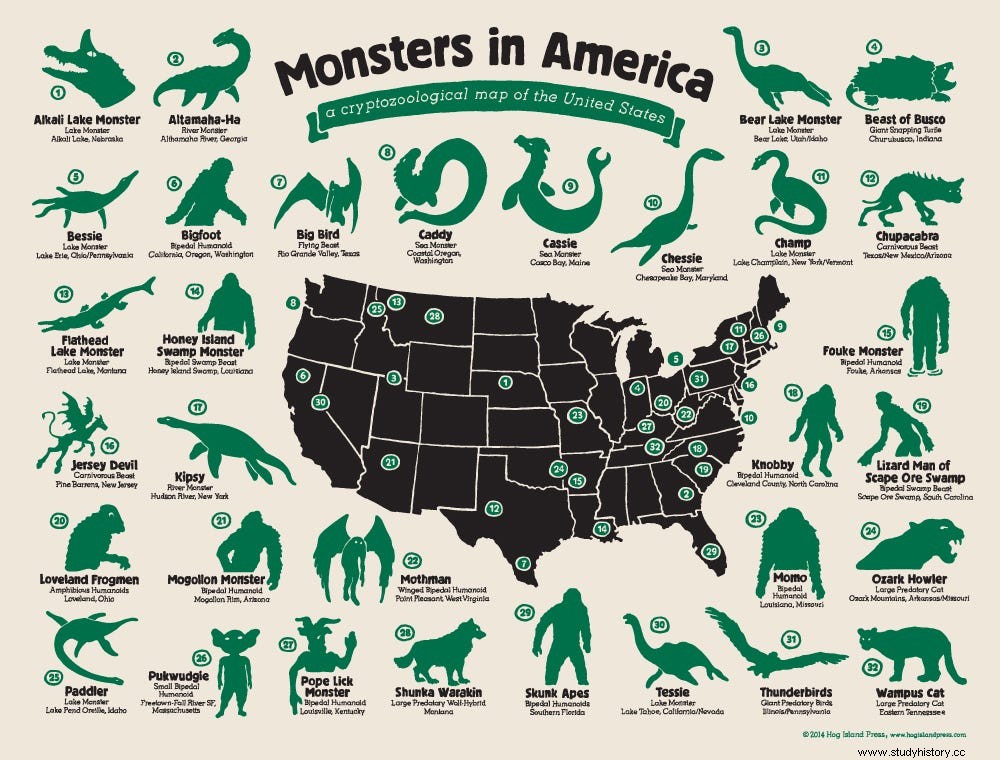
Bigfoot
One of the most famous North American cryptocurrencies is Bigfoot, also known as Sasquatch. The name "Sasquatch" is derived from the Salish word saskehavas, which means "wild men". Bigfoot is believed to migrate west into Canada and the northwestern United States. This creature is often described by the locals as a large, two-legged monkey with incredible strength, with brown or black fur that covers most of the body and, as the name indicates, has a pair of massive feet. Reported observations and alleged casts of Bigfoot footprints, mainly in temperate forests, have ranged from one and a half to two feet long. These large footprints are what gave Bigfoot the name. Many suspected Bigfoot sightings have been explained as bears walking on their hind legs or pranksters in monkey costumes.
Cryptide Observations
Bigfoot is not the only "monkey man" mentioned in folklore. Yeti in the Himalayas and Skunk Monkey in Florida are two other very well-known examples of large ap-like humanoid creatures. However, Bigfoot has gathered the largest amount of "evidence" for its existence based on the number of reported sightings. The first evidence of Bigfoot found by a European was in 1811. The English explorer David Thompson reported finding "footprints" that he believed belonged to an unidentified creature. Reported observations and footprints continued to be discovered over the next hundred years. But Bigfoot really gained his fame when an American, Raymond Wallace, in 1958, claimed to have seen the creature on several occasions and presented large footprints as evidence. Although he never admitted it in his lifetime, his children reported after his death in 2002 that Wallace's Bigfoot evidence was an elaborate nonsense. However, this admission discouraged other Bigfoot hunters. Reported observations and evidence of Bigfoot continued in Canada and the United States. The most famous sighting of Bigfoot was shared in a video and seen with photographs by American directors Roger Patterson and Bob Gimlin in 1967. They claimed that these images show a female Bigfoot in Bluff Creek, California. These images have become iconic. Furthermore, many TV shows and documentaries have been dedicated to uncovering the mystery of Bigfoot, such as Expedition Bigfoot in 2019 , Find Bigfoot in 2011, and Sasquatch in 2021.
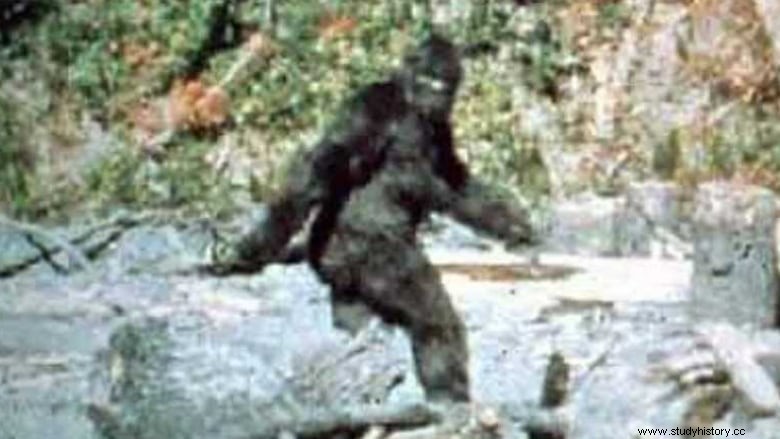
El Chupacabra
"Chupacabra", meaning goat sucker, is another very well known but completely different type of cryptid, which has been reported by farmers in Central America, the Caribbean and the southern United States since the late 1990s. This mysterious creature has been blamed for slaughtering domestic animals by emptying them of blood. The first mention of this creature came in 1995 in Puerto Rico by a woman named Madelyne Tolentino who said that the Chupacabra killed her goats and left holes in the wounds of a vampire bat. The descriptions of Chupacabra vary much more than descriptions of Bigfoot. Some witnesses claim that the Chupacabra is a 5-foot-tall bipedal reptile, while others claim that it looks more like a hairless dog with spines running down its back. Some even say that the creature is an extraterrestrial and have linked it to UFO sightings. However, the various descriptions of Chupacabra have several overlapping and defining characteristics:nocturnal, glowing red eyes, scaly skin and razor-sharp fangs and claws. Chupacabra, like a vampire, is said to feed the blood of its victims, mostly goats and other small domestic animals, using a pair of deadly choppers. Animals killed by Chupacabra are almost completely drained of blood. In addition, Chupacabra is said to be extremely vicious and hostile to everything it encounters.
The truth behind the cryptography
Despite the animal's notoriety and having attracted the attention of many cryptic hunters, there has been no significant evidence that Chupacabra is anything more than a myth. Many allegedly captured Chupacabras turn out to be just wild dogs and coyotes suffering from scabies, a skin condition spread by parasite mites that cause animals to lose all their hair, their skin turns gray and get severe rashes. And researchers believe that Chupacabra observations are really just observations of canines suffering from scabies. The dead domestic animals are most likely just victims of hungry wild dogs and coyotes. Despite the explanations and evidence that credibly dispute the existence of the Chupacabra, many people still believe in this creature, and images and observations of the animal continue to emerge and generate great interest.
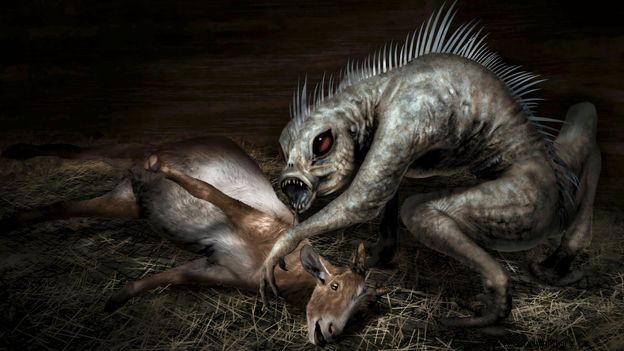
Mothman
In the town of Point Pleasant in West Virginia, it is said that a creature that does not resemble anything in nature lurks in the shadows, and when it appears, it shows doom. This creature, called "Mothman", is described as combining the characteristics of an insect and a man:it has a rough humanoid shape, with carbon black skin, a massive wingspan and large glowing red eyes. Some accounts claim that the creature is headless with its eyes on its chest. It is rumored that Mothman will act as a sign of impending major disasters. Many people draw connections between Mothman observations and massive accidents and disasters that happen a few days later. The events Mothman is often linked to are catastrophic and result in massive loss of life, property damage or both.
Cryptide Observations
Myths surrounding Mothman first emerged on November 12, 1966, when several witnesses claimed to have seen a large, flying creature with a roughly humanoid shape and glowing red eyes. Observations continued in Point Pleasant until December 15, 1967, the same day that the Great Bridge, Silver Bridge, collapsed and killed forty-six people. As news of random sightings of the strange insect-like humanoid creature and the bridge disaster spread, people around the world began to claim to have seen Mothman shortly before other disasters. Some people have even claimed to have seen the animal fly around just a few days before the nuclear decay in Chernobyl in 1986. While the photographs allegedly circulate showing Mothman, there is no physical evidence such as DNA or a footprint of the creature. Some researchers explain that these "appearances" of Mothman are actually owls or other large birds of prey.
The Mothman remains a symbol of the town of Point Pleasant. Rumors of close meetings are still spreading. A Mothman statue was erected in the center, and there is now a Mothman Museum and an annual Mothman Festival. The Mothman, like Bigfoot, has become part of modern popular culture. Mothman is the theme of the 1975 book The Mothman Prophecies by John Keel, which was later adapted into a 2002 film starring Richard Gere. Other even less memorable Mothman movies were made, such as The Mothman's Eyes, as a reviewer on Rotten Tomatoes, Steven W, asked "please ... for the love of God ... for the love of pound cake .... for the love of EVERYTHING you can love ... DO NOT SEE THIS."
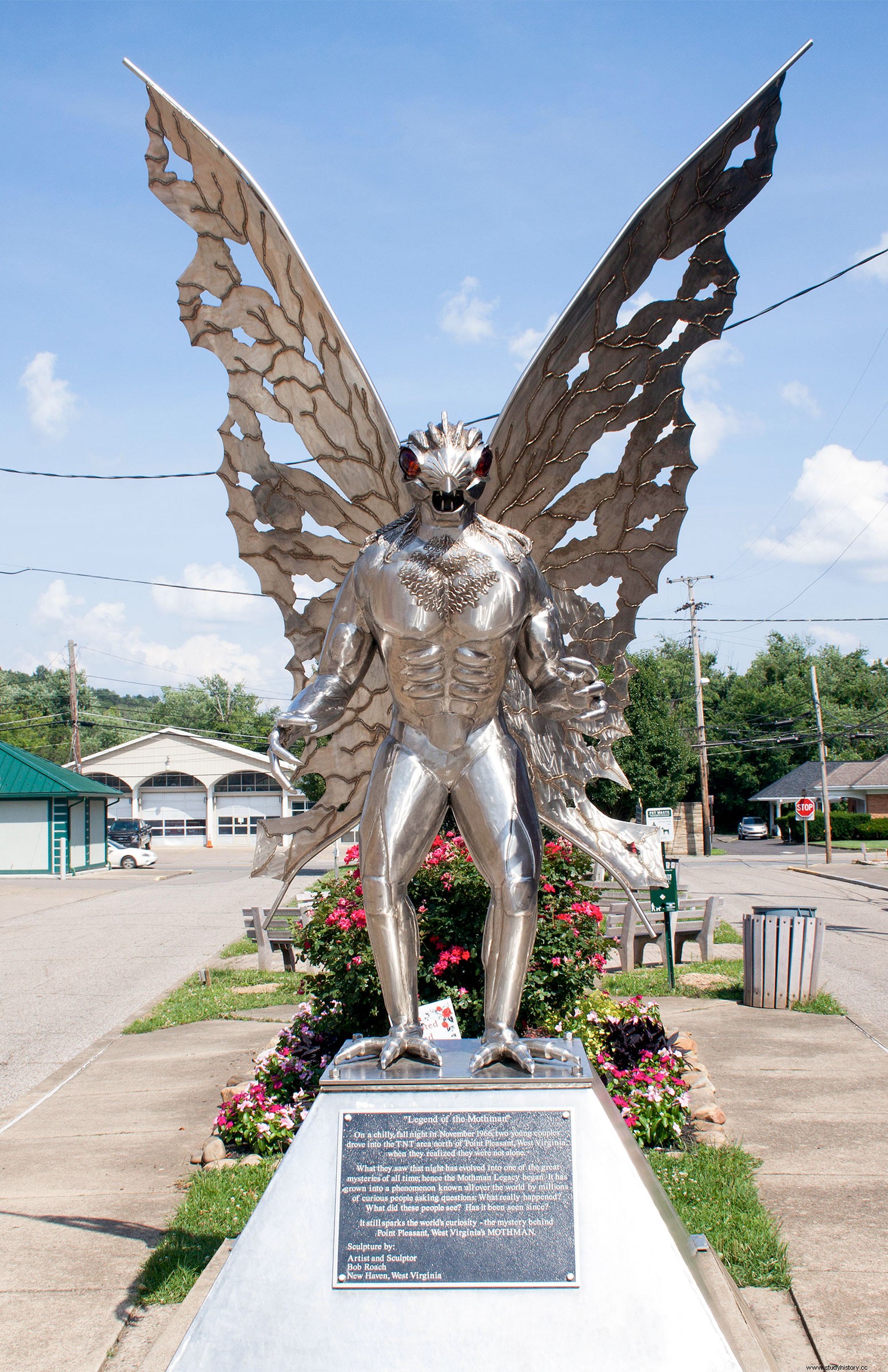
Devil Sweater
The myth of the Jersey Devil - a demon that flies through the skies in New Jersey and Pennsylvania and kills livestock and destroys crops - has been around for over 250 years. The Jersey Devil is described as a malevolent biped with a goat's head, a snake-like tail and large bat-like wings. This insect has been seen lurking in forests, perched on rooftops, or flying through the sky with its massive wings. The nature of this cryptic era is controversial. Some people believe that the Jersey Devil is a manifestation of Satan, others claim that it is a cursed child, and still others speculate that it is an undiscovered species.
Birth of a cryptid
An original myth about the Jersey Devil dates back to the year 1735 in Leeds Point, New Jersey. On a stormy night, while giving birth to her thirteenth child, a woman named Deborah Leeds shouted that the child was the devil. As the story goes, the baby was born with various inhuman malformations, including horns, wings, hooves and a tail. The baby escaped and is still alive, looking for victims in the middle of the night. Observations of the Jersey Devil have been reported for centuries, even by police officers and politicians. They claimed to have seen the monster move rapidly through the night. Scientists have come up with several theories about the true nature of the monster, such as that it is a crane, a statue of a gargoyle or a worker on the roof. Despite its infamous and persistent observations for hundreds of years, no physical evidence has been found to confirm the existence of the Jersey Devil. However, the crypto era is still a big symbol of New Jersey, as evidenced by the fact that New Jersey's professional ice hockey team was named the New Jersey Devils. Their name is based on the Jersey Devil and was given to the team by fans who voted for it as the team's new name.
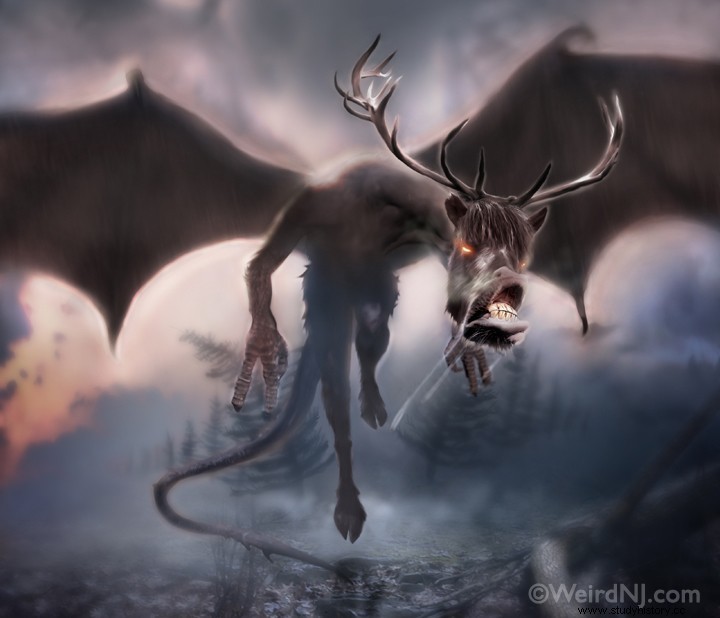
Champ
Almost all cultures have their sea snake myths. Scotland has the Loch Ness monster, and North America has Champ, the reptilian water monster in Lake Champlain, which is mainly located in northwestern Vermont, but also crosses into New York and Canada. Legends of a giant sea worm or marine reptile living in Lake Champlain first appeared centuries ago with the Abenaki Indians, who described a terrifying giant horn snake called the Guitar Forest, which means «the great serpent». The champ is often depicted as either a giant snake or a prehistoric marine reptile like the long-necked Plesiosaurs with black or green shells along the body. Reports on the length of the Champs have varied widely, from 10 to 187 feet long.
Cryptide Observations
One of the most famous sightings of Champ was in Port Henry, New York, of a "Captain Crum" in 1819. The captain told reporters that he saw a 187-foot-long black snake with a horse-like face lifting its head out of the water. He claimed that it had pale eyes, three teeth and a star mark on its forehead. Captain Crum, however, had nothing to support his story. Reported observations of Champ continue to this day. There are even pictures of close encounters with Champ. One of the most famous photos was taken in St. Albans, Vermont by Sandra Mansi in 1977. It shows a snake-like shape sticking its head out of Lake Champlain. Many people cite this picture as an indisputable proof that Champ exists somewhere in the lake. However, researchers believe that the figure in the photograph is most likely just a piece of driftwood. While people claim that it is entirely possible that a creature can lurk undetected in the depths of the lake of 420 square kilometers, scientists offer simpler explanations. Researchers say that the observations are probably of large fish that live in Lake Champlain, such as sturgeon and garpikes that have long and slender bodies. Rapidly cooling lake water can create air reflections in the air that will make the fish look much longer than it actually is, even monstrous.
Despite the scientific explanation for the observations, Champ holds a special place in the hearts of the people of Vermont and New York. The city of Burlington, Vermont, has a baseball team called the Vermont Lake Monsters, with Champ as mascot. Champ is such an icon as in the village of Port Henry, New York, August 7 th has been declared "Champ Day", when people hold a Lake Champlain Monster Festival and celebrate the mythical creature.
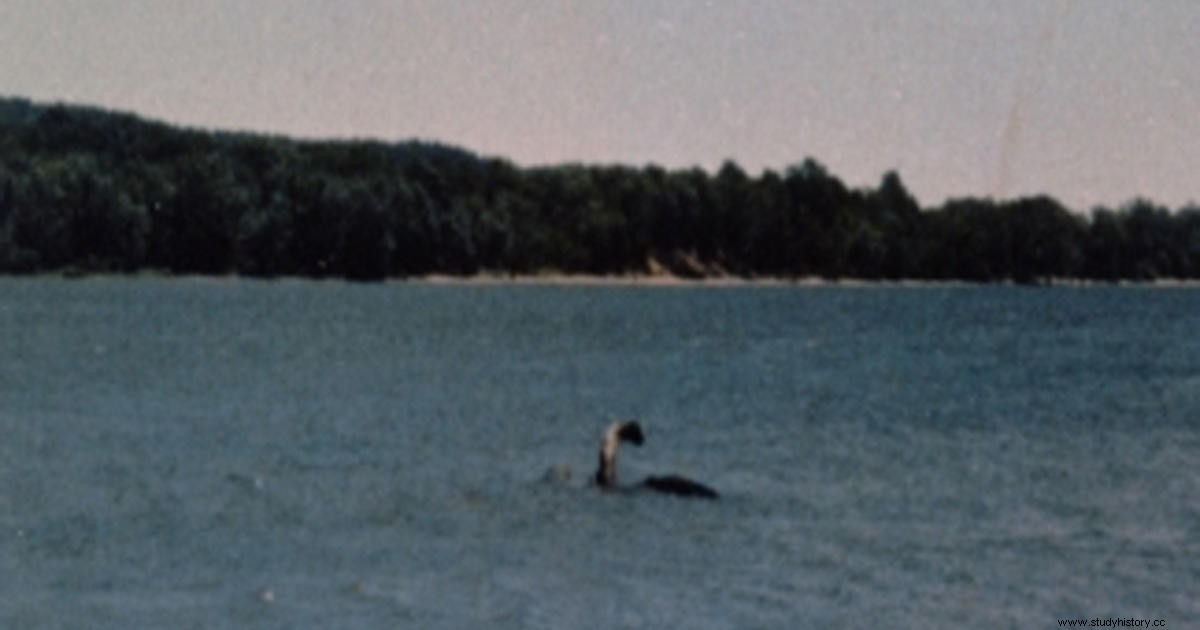 Cryptids:Myth Vs. reality
Cryptids:Myth Vs. reality Cryptids act as a bridge between fantasy and reality. Myths and folklore people grow up on can often make them see the world in a more supernatural light, where everything that moves in the corner of the eye can somehow be linked to the creatures they were told about in stories. Such deep-seated beliefs are difficult to overcome no matter how convincing the scientific explanations are or how wonderful the creatures are. Belief in cryptography is not limited to North America, but is persistent in cultures around the world. There seems to be something deeply human in believing that there are invisible beings lurking just beyond what is known and what is real, and yet just as well to disprove such fantasies through science and reason. So there will always be some people who want to prove the existence of monsters and others who want to dispel such myths.
If you enjoyed reading my article, you should check out my articles on:
Toolmaking
Thor
Dinosaur art
